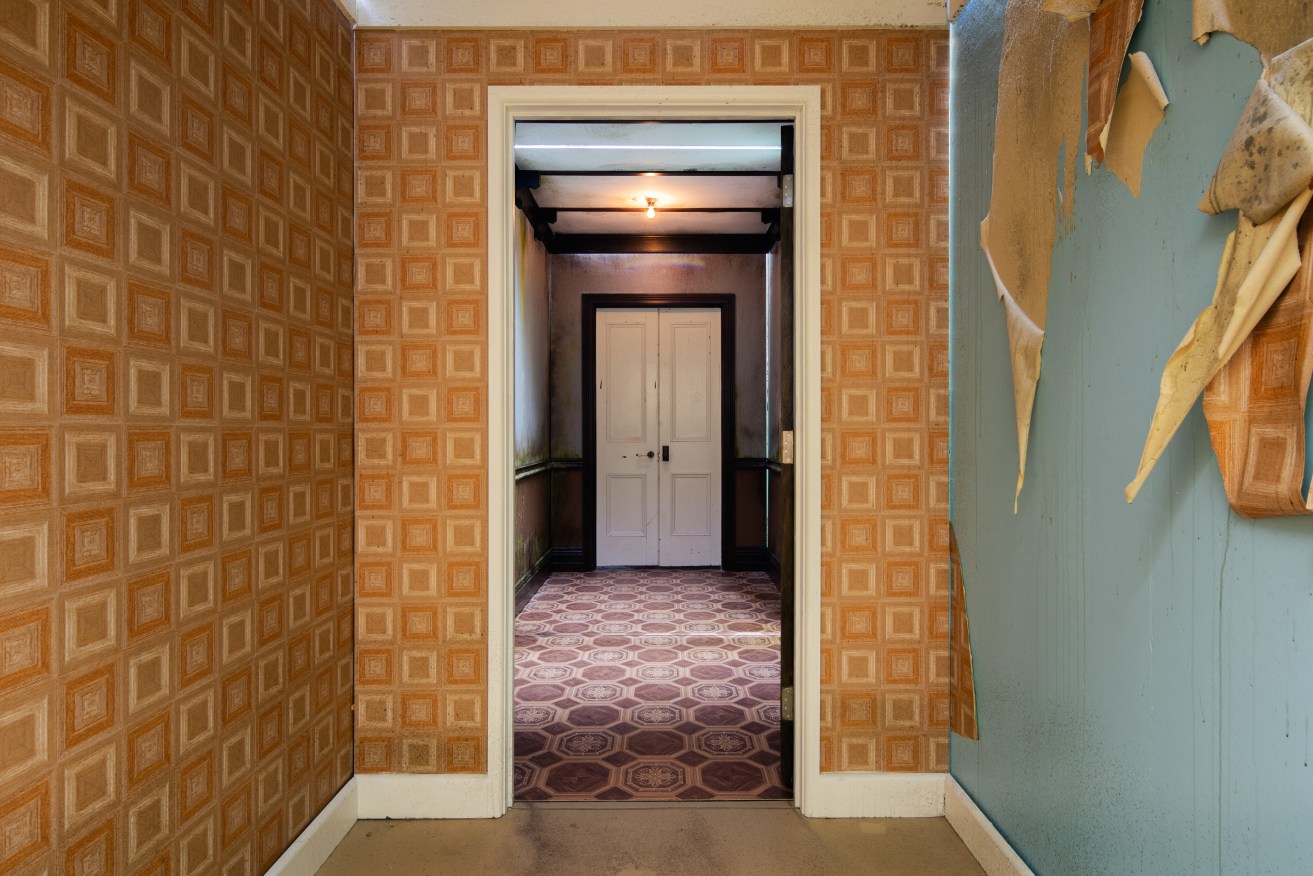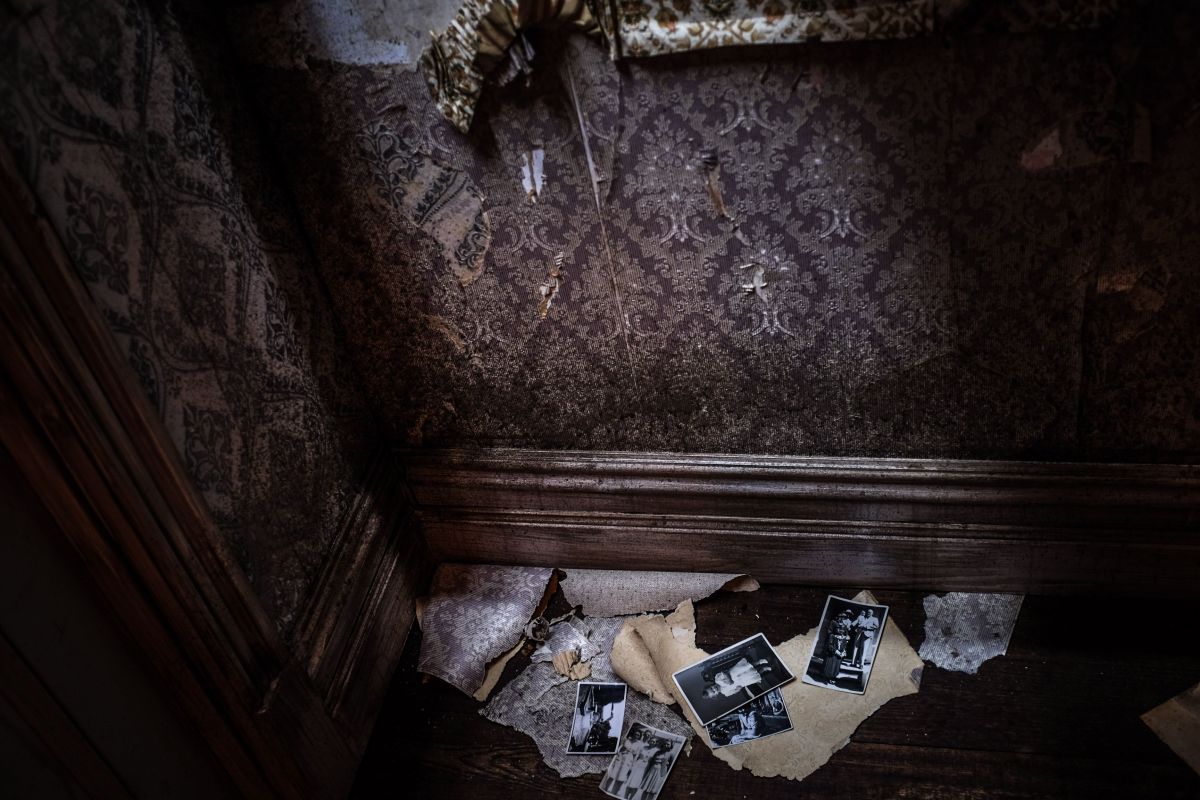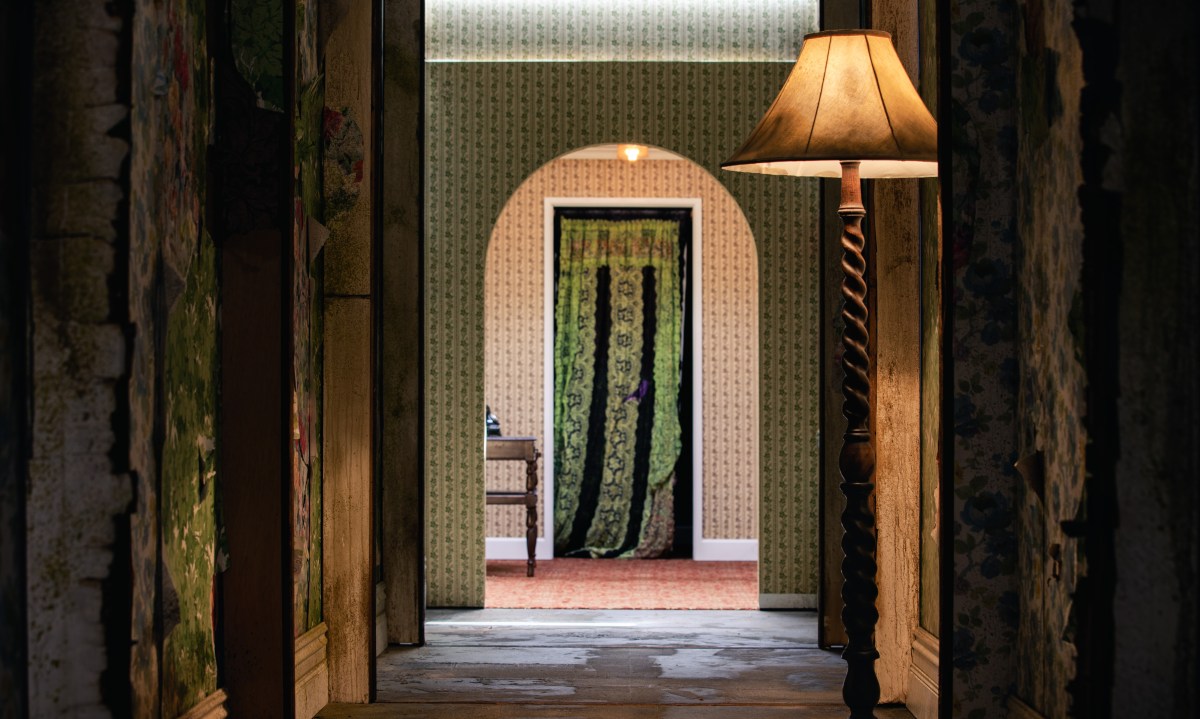‘Those who come out really moved are not counting the doors’
A roaming labyrinth connected by corridors strewn with photographs and forgotten objects will soon be open for exploration in the Garden of Unearthly Delights.


The purpose of 1000 Doors is to get under participants’ skin, co-creator Christian Wagstaff tells InDaily.
“The visual of the door being locked or shut or ajar or wide open or creaking, the whole aspect of a door is fully loaded with emotion and memory,” he says.
“The exhibition throws people in so many different ways. Some people are really threatened by it and upset, and some people are annoyed by it because they’ve counted the doors and there aren’t 1000 as far as they’re concerned.”
1000 Doors – a seemingly endless passageway of rooms divided by doors, which are marked by the wear and tear of time and those who lived behind them – debuted at the Melbourne Festival in 2018 before touring to destinations such as Singapore, New Zealand and North America.
It will be in the Garden of Unearthly Delights in Rundle Park from February 14 to March 13 as part of the 2020 Adelaide Fringe.
Creators Wagstaff and Keith Courtney wanted this exhibition to be more “confronting”, “claustrophobic” and “dark” than its celebrated sister exhibition House of Mirrors, which visited the Garden last year.
The duo did this by giving the 400sqm space a new metaphorical concept compounded in meaning: the door.
“The idea of a door for us is it doesn’t have to be a timber frame structure with a door handle on it,” Wagstaff says.
“There’re spy holes, portals from one space into the next, there’s telephones, there’s radios: they’re all doorways from one space to another.
“Those who come out really moved are not counting the doors.”
Some of the immersive exhibition’s doors are literal, such as the discarded structures Wagstaff and Courtney unearthed in salvage yards across Australia, adorned with handles or hooks or children’s illustrations.
Wagstaff says other figurative “doors” – or portals – are a tenuous link to the past, such as the 1000 abandoned photos or forgotten furniture scattered throughout the vestibules, holding pens and hallways.
All the items are pre-loved and have been purposefully aged by the touring schedule and elements.
“It can be a little bit pretentious but the things find us,” Wagstaff says of the objects picked up online, from friends and on the road.
“We acquire objects or found objects from each town, and as the show travels, it picks up all the orphans from city to city.
“It (1000 Doors) has got this incredible long tail and energy behind it.”

Wagstaff’s favourite photo from 1000 Doors is a woman sitting in a chair. He found it at the end of the Melbourne season but hasn’t seen it since. Photo: Sam Slicer
Unlike House of Mirrors, 1000 Doors has no roof, so when it rains audiences should expect to get wet. This serves as a reminder that all structures, even abandoned ones, decay.
“We’re all dying, and 1000 Doors is falling apart as it travels,” Wagstaff says. “That’s the cycle of life.”
Melbourne composer Tamil Rogeon wrote the soundtrack that fills the space; it is punctuated by “murmuring voices behind the walls” and leitmotifs cut from cult horror film such as Rosemary’s Baby.
Although each room was designed to not be “too prescriptive” or to outline a particular narrative, the Roman Polanski film inspired a cupboard in the exhibition.
Some of the rooms are “unremarkably remarkable” and include nothing within them, while others swirl with possibilities, like a hospital hallway or dark staircase.
Despite the exhibition encouraging visitors to imagine those who previously formed lives around the objects or doorways, it can also lead to introspection and personal recollections.
Wagstaff and Courtney often pop into the exhibition to see how the work is received, and one reaction that stayed with Wagstaff was a misty-eyed older man who was reminded of his childhood.
“He said, ‘It was remarkable because it reminded me of the UK, where I’m from’,” Wagstaff says.
“’I’m 90 and I lived through the Second World War, and during the blitz, the bombings, I remember as a child seeing all the photographs scattered all over the streets.’
“He said ‘I’ve never thought of that since’.”

1000 Doors is a ticketed event and will be running at the Garden of Unearthly Delights in Rundle Park from February 14 to March 13 as part of the Adelaide Fringe. See more InDaily Fringe and Festival stories and interviews here.




